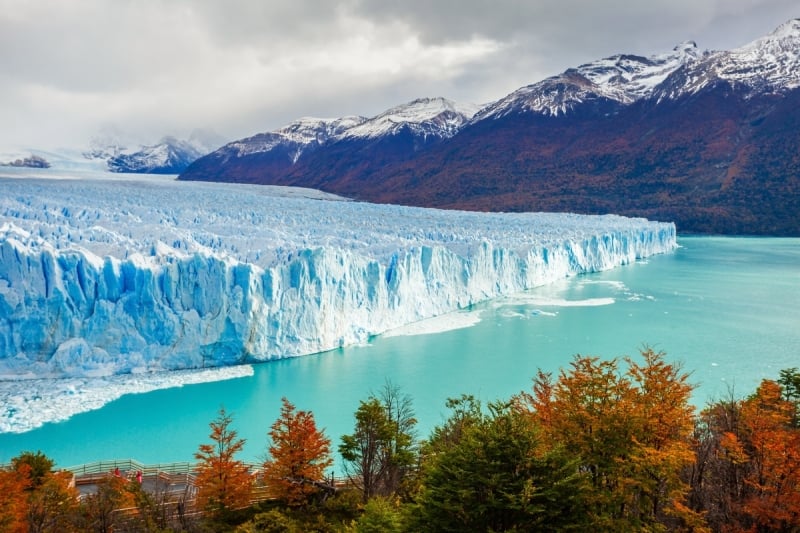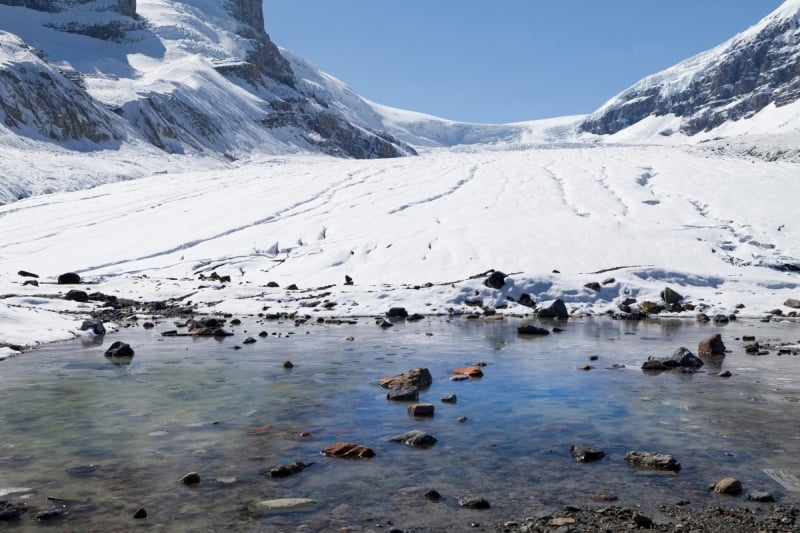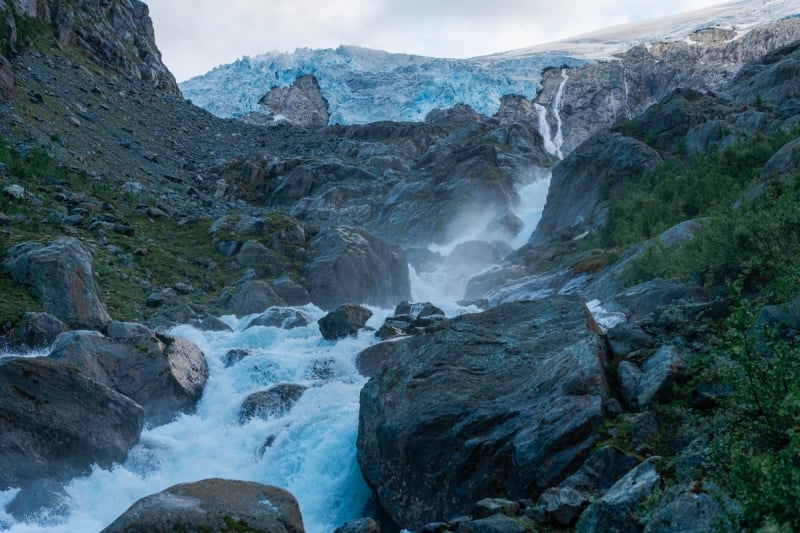Glaciers have shaped mountains, valleys, and coastlines for millennia, acting as vast frozen reservoirs that influence weather, sea levels, and ecosystems far beyond their icy borders. In recent decades, however, scientists have recorded an accelerating decline in glacier mass around the world, making them a rare sight to behold.
The Intergovernmental Panel on Climate Change reports that almost all monitored glaciers have been retreating since the late twentieth century, with many losing several metres of thickness each decade. Rising global temperatures and shifting precipitation patterns are driving this rapid melt, making glacier loss one of the clearest indicators of global warming.
This means that glaciers today are no longer simply a scenic highlight. It is a glimpse into landscapes that may look dramatically different within a generation. For travellers who want to witness these extraordinary formations while they still exist, here are seven remarkable glaciers worth experiencing firsthand.
Six Stunning glaciers to visit before they melt
1. Perito Moreno Glacier, Argentina

Image credit: Andrey via Canva Pro
Perito Moreno remains one of Patagonia’s most impressive sights because it is unusually stable compared with its neighbours. Its towering blue walls rise high above the water, creating a dramatic natural amphitheatre where large chunks of ice often crash into Lake Argentino with thunderous splashes. Well-maintained boardwalks allow visitors to view the glacier from multiple angles without disturbing its fragile surroundings.
Beyond the viewpoints, boat tours offer another memorable perspective as they glide close to the immense ice face. Even though Perito Moreno is not retreating as quickly as many others, climate scientists continue to monitor the region closely as overall warming trends may eventually alter its long-term behaviour. For now, its accessibility and scale make it one of the most captivating glaciers to visit.
The ice caves are becoming increasingly delicate. Visiting now means witnessing geological processes that are constantly in flux.
2. Franz Josef Glacier, New Zealand

Image credit: VanderWolf Images via Canva Pro
Franz Josef is famous for its rare combination of ice and rainforest. Few other glaciers descend so quickly from alpine heights into lush green valleys, creating a dramatic clash of ecosystems. The sight of bright ice set against deep forest greens makes this glacier one of the most striking in the Southern Hemisphere.
Because the glacier has been retreating rapidly, foot access is no longer possible, and helicopter tours have become the main way to reach its upper sections. These heli hikes allow visitors to explore sculpted ice formations and deep blue crevasses with experienced guides who explain how much the glacier has changed over the past decades. It is a beautiful destination, but also a sobering example of how climate change reshapes natural wonders.
3. Athabasca Glacier, Canada

Image credit: toos via Canva Pro
Athabasca Glacier sits beside the famous Icefields Parkway in Alberta, making it one of the most visited glaciers in North America. The short walk to its forefield feels like stepping back in time as markers show how far the glacier has retreated since the nineteenth century. Its rapid melt has made it a key location for climate research and public education.
Guided ice walks allow travellers to safely explore its surface and feel the texture of ancient ice beneath their feet. The surrounding mountains spectacularly frame the glacier, but scientists warn that Athabasca is shrinking at a concerning rate. A trip to this glacier provides a front-row view of a landscape that is changing faster than many predicted.
4. Mer de Glace, France

Image credit: Puripatl via Canva Pro
Mer de Glace has long been a symbol of alpine exploration. Once flowing proudly through the valley above Chamonix, the glacier has thinned and retreated dramatically in recent decades. The famous viewpoint reached by the Montenvers railway now overlooks a landscape that has transformed significantly within a single lifetime.
Stairs are added regularly to reach the glacier’s surface, a stark visual reminder of how quickly the ice is disappearing. Visitors can tour the ice grotto each year, although its structure must be rebuilt as the glacier shifts. Mer de Glace remains a fascinating stop for anyone exploring the Mont Blanc region, offering both beauty and a poignant lesson in environmental change.
5. Jostedalsbreen, Norway

Image credit: Oleh Slobodeniuk via Canva Pro
Jostedalsbreen is mainland Europe’s largest glacier and a breathtaking network of icy arms spreading across mountains and valleys. Its bright blue meltwater lakes and dramatic cliffs make it a favourite destination for hikers and nature lovers. One of its most popular arms, Nigardsbreen, provides a safe and scenic setting for guided glacier walks suitable for beginners.
The glacier has been thinning in recent years, and its outlet arms are retreating steadily. Local guides who have worked in the area for decades often describe how the ice has changed shape and position within their own lifetimes. Despite this, Jostedalsbreen is still one of the most accessible and rewarding glaciers to explore in Scandinavia.
6. Pastoruri Glacier, Peru

Image credit: Daboost via Canva Pro
Pastoruri Glacier in the Cordillera Blanca was once a major attraction for adventure travellers, but its dramatic retreat has transformed it into a symbol of climate awareness in Peru. Authorities now promote climate change tourism to educate visitors about the challenges facing tropical glaciers, which are among the most vulnerable in the world.
A walk to Pastoruri reveals both stark beauty and environmental fragility. The surrounding landscape is filled with high-altitude flora, shimmering lakes, and rugged peaks, creating a powerful visual contrast with the shrinking glacier. The region offers not only scenic rewards but also a deeper understanding of how warming temperatures affect mountain communities.
Final Thoughts
Glaciers are among the world’s most extraordinary natural treasures, and their rapid decline highlights how quickly the planet is changing. Exploring them today offers not just memorable scenery but also a valuable perspective on environmental stewardship. Whether you are drawn to icy blue caves, towering frozen cliffs, or unique high altitude ecosystems, there has never been a more important moment to appreciate these landscapes while they are still here.




